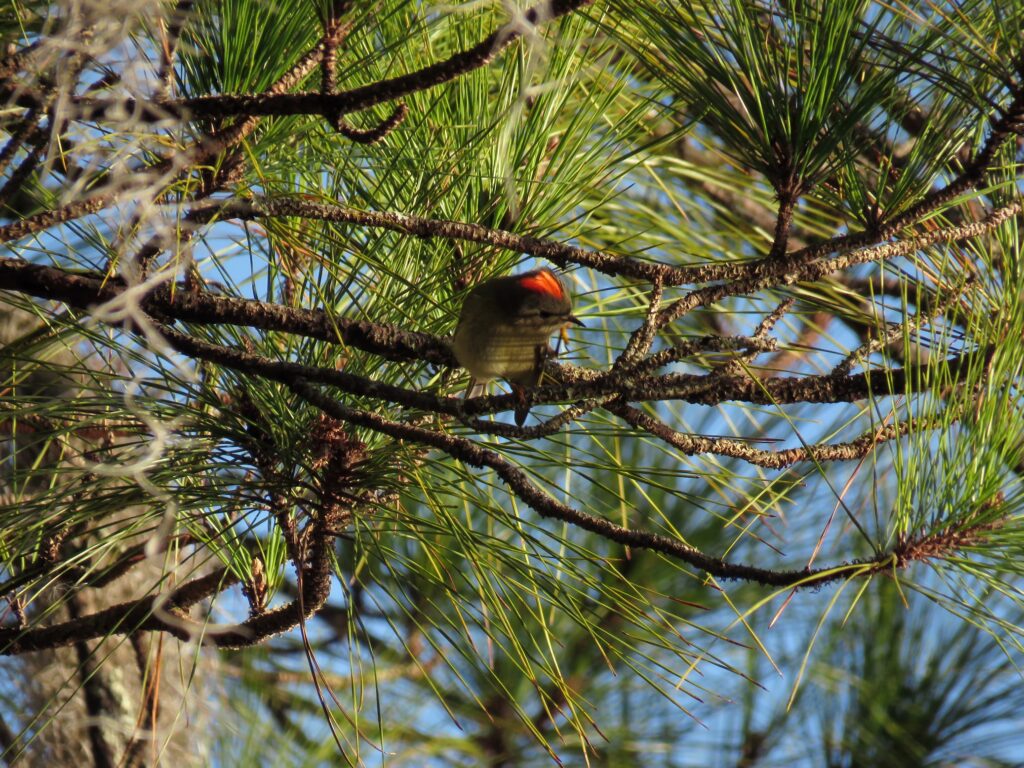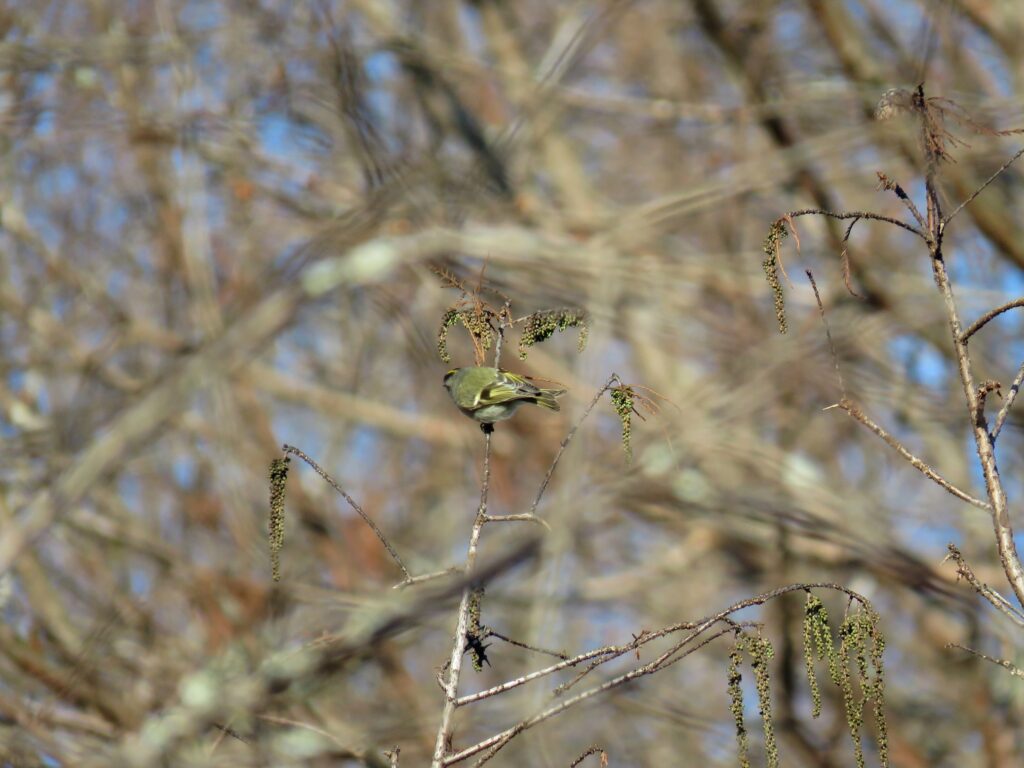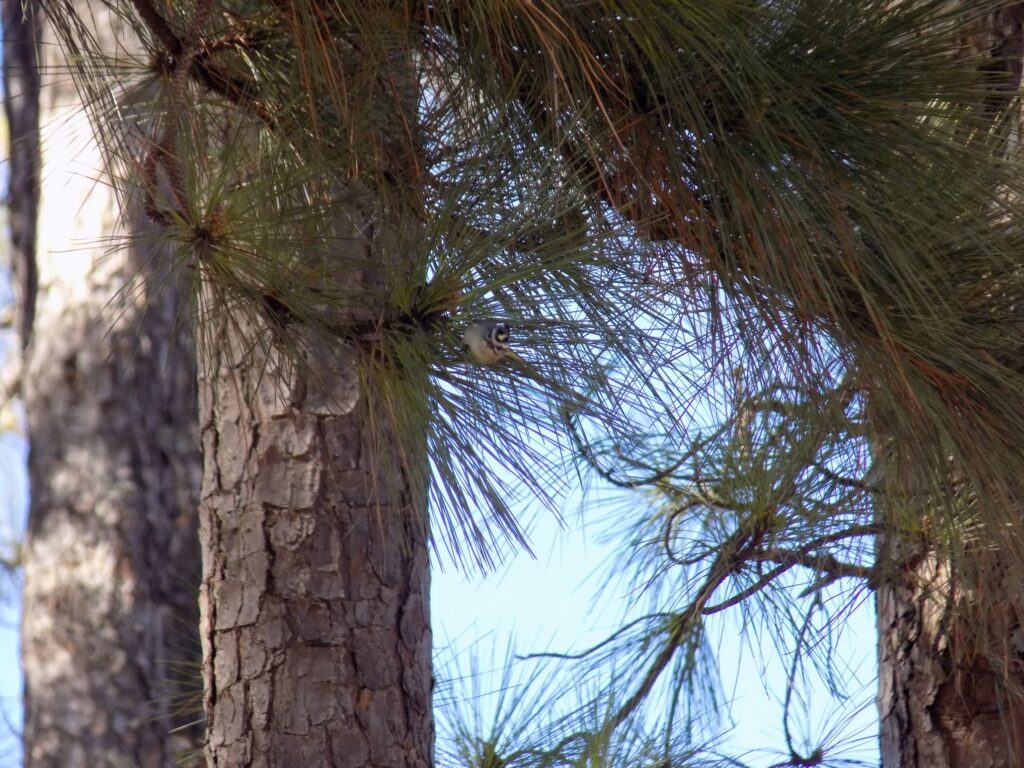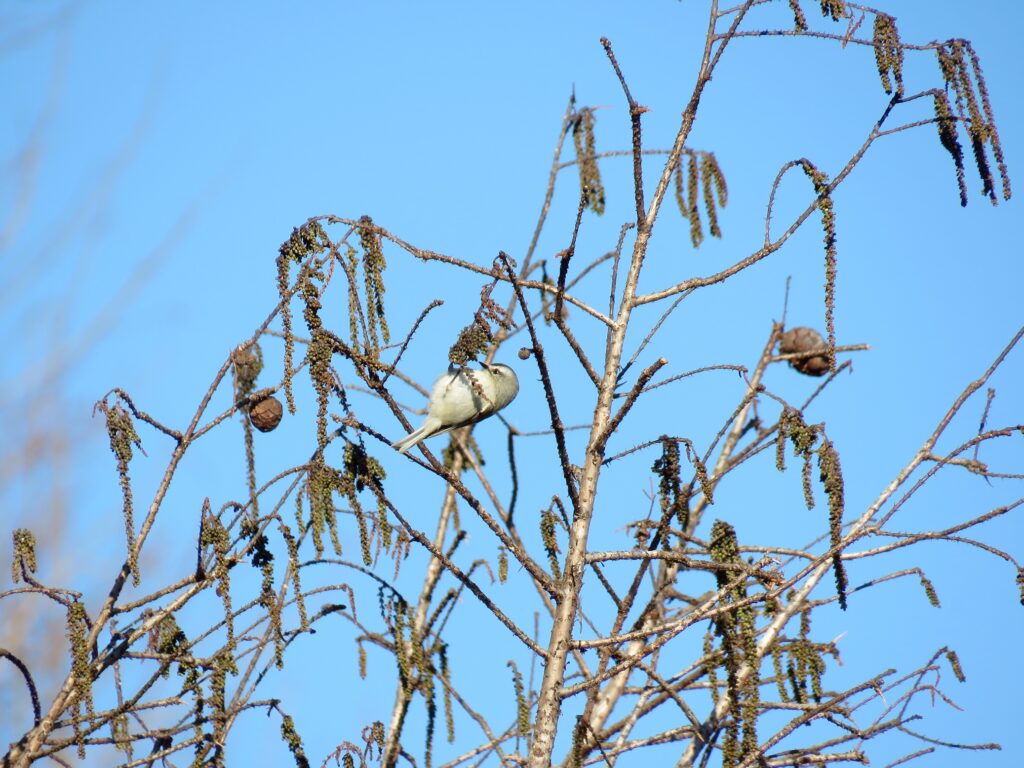





This week for Flora and Fauna Friday, we’re looking at a pair of birds that we welcome to our state every winter, the Kinglets.
There are two species of Kinglet that migrate to our state: the Ruby-crowned Kinglet (Regulus calendula) and the Golden-crowned Kinglet (Regulus satrapa). Kinglets are tiny birds. The only SC bird smaller than a Kinglet is the Ruby-throated Hummingbird. Despite their size, Kinglets have a lot of energy and personality. Kinglets spend their days rapidly bouncing through the brush or treetops eating tiny caterpillars, moths, spiders, beetles, and other insects that are overlooked by larger leaf gleaners. Count yourself lucky if you get to watch one sitting still for longer than 3 seconds. Their small size and preference for cold weather means they need to eat constantly to keep their metabolism up and avoid hypothermia. Kinglets, especially the Ruby-crowned, are gregarious and boisterous. Ruby-crowned Kinglets often make a chattering call, much like a Wren, as they dart through brush or along forest edges. They sing a chaotic song, featuring a rapid build-up into a series of sporadic whistles, squeaks and chirps that is, once again, very Wren-like. Golden-crowned Kinglets are more reserved, issuing high pitched calls and songs from the treetops, reminiscent of a Chickadee.
The Kinglets get their name from their diminutive size and a vibrantly colored crest. Males of both species flaunt this normally subdued crest in courtship and territorial displays. As their common names imply, the Ruby-crowned Kinglet has a striking ruby-red crown and the Golden-crowned Kinglet has a fiery golden-orange crest. Apart from their hairstyles, the two species are easy to tell apart. Ruby-crowned Kinglets prefer habitat low to the ground and are most commonly seen flitting through shrubs along forest edges or in forest understories. They are olive-drab in color with an unmarked face, save for a prominent white eye-ring. Golden-crowned Kinglets are partial to the canopies of Pines, particularly in mixed forests. Their bodies are similar in plumage to Ruby-crowned Kinglets but with a pale-gray underside and a more petite build. Their face, however, is much different. They sport a sooty moustache and eye-stripe as well as a halo of coal beneath their burning crown. Kinglets are birds that are easy to find but hard to see, and even harder to photograph (evidenced by my lackluster photos). Kinglets are common visitors to backyards, so long as you have the vegetation for them to hunt in, but their tiny size and hyperactive nature let them hide in plain sight. Next time you find yourself on the forest’s edge in the cool morning air. Take a minute to listen for chatters and whistles while watching for tiny green blurs. You may just stumble upon a Kinglet, collecting its breakfast.